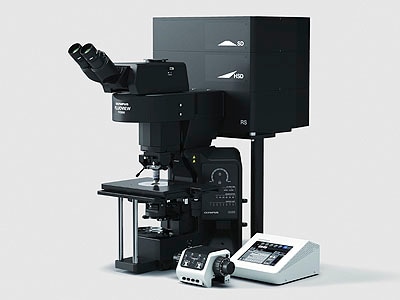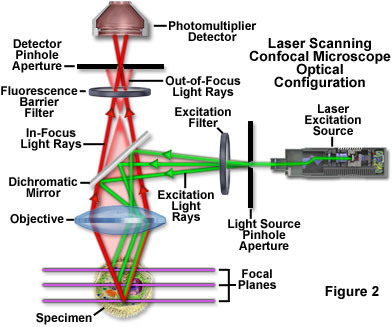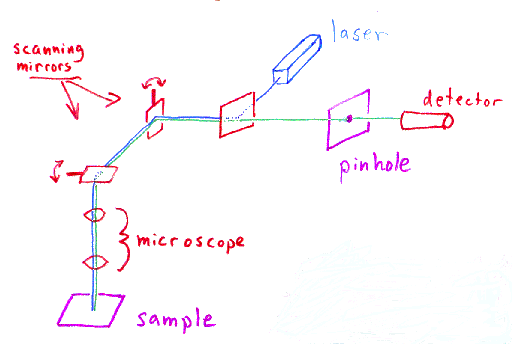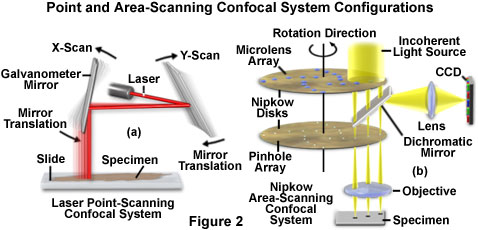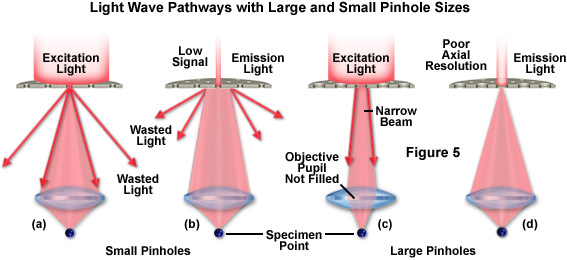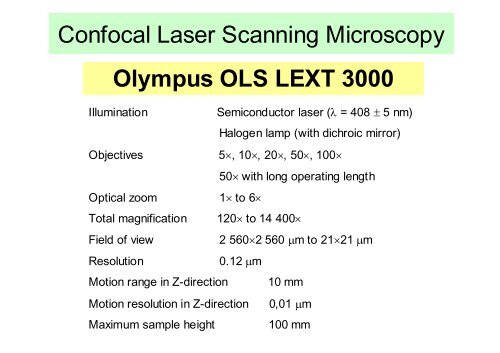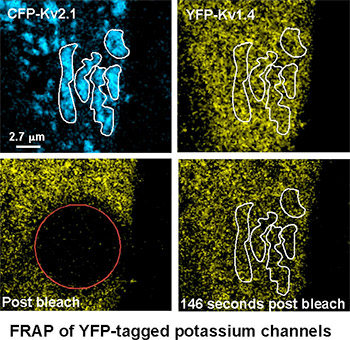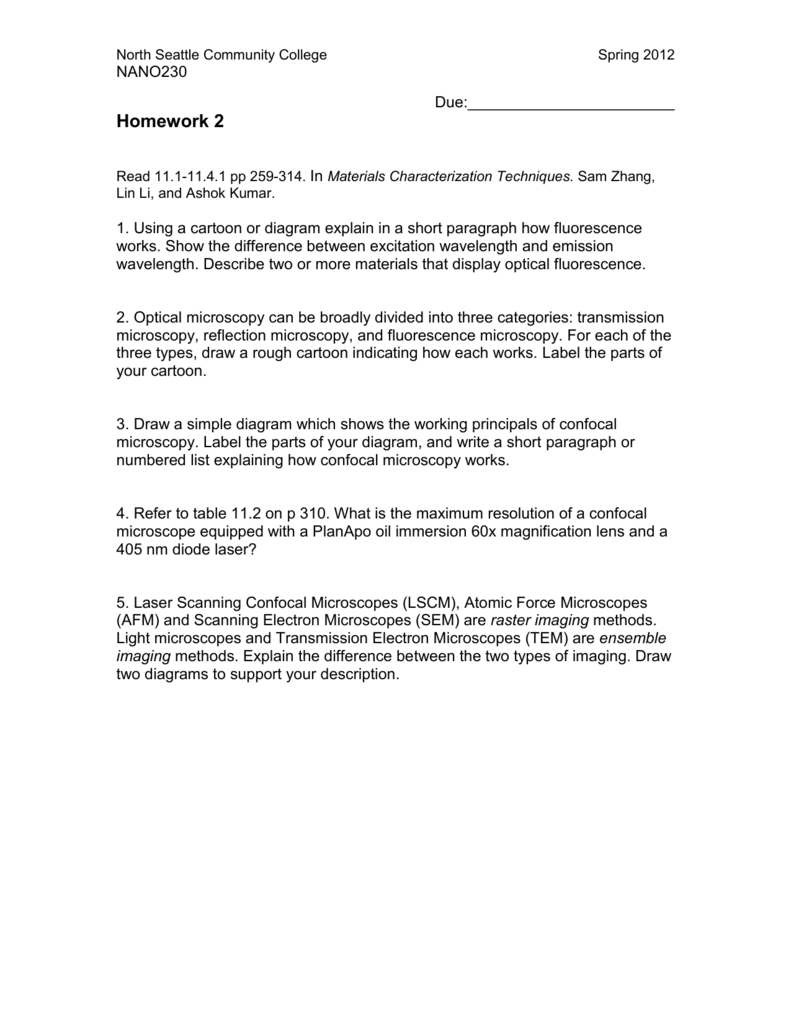The confocal laser scanning microscope clsm is a microscope which focuses only on a single focal plane and the unfocused plane will not be visualized.
Laser scanning confocal microscope maximum magnification.
A confocal laser scanning microscope or also known as laser scanning confocal microscope is used to obtain high resolution images and generate 3d reconstructions through direct optical sectioning to provide clear images from a range of depths of thicker specimens for nanometer level imaging and measurement.
Relatively thick specimens can be imaged in successive volumes by acquiring a series of sections along the optical z axis of the microscope.
In the past the traditional laser microscope excited the whole thickness of the sample resulting in saturated blurry images and sometimes visualizing false colocalization images.
Capturing multiple two dimensional images at different depths in a sample enables the.
The laser scans across the object and an image is built up pixel by pixel on a screen.
The confocal laser scanning microscope s aim was not to further increase magnification but to make clearer.
Another drawback is that duv microscopes do not have the capability for surface topography 3d imaging.
Confocal microscopy most frequently confocal laser scanning microscopy clsm or laser confocal scanning microscopy lcsm is an optical imaging technique for increasing optical resolution and contrast of a micrograph by means of using a spatial pinhole to block out of focus light in image formation.
The laser scanning microscope uses a scanning design called beam scanning where the laser image path is scanned in a raster pattern on the surface of the sample.
The scanning electron microscope has a magnification range from 15x to 200 000x reached in 25 steps and a resolution of 5.
